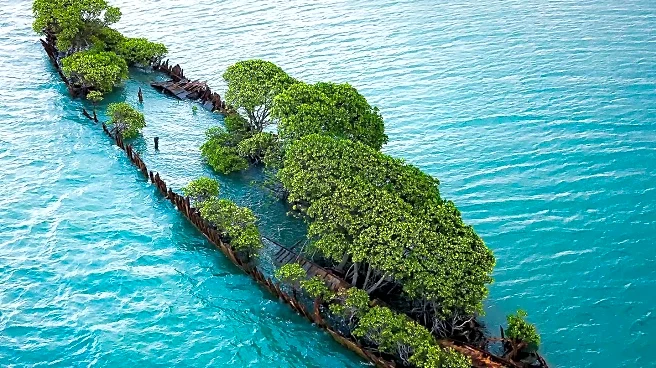What is the story about?
What's Happening?
Deadman's Island, located opposite Queenborough on the Isle of Sheppey in Kent, is experiencing natural erosion that is uncovering human graves from over 200 years ago. The island was historically used to quarantine ships entering London to prevent the spread of contagious diseases. Trevor Mason, who manages a social media page about the island, explained that sailors who died from diseases while their ships were moored were buried on the island. The site is now uninhabited and off-limits to the public, with stories of its eerie past passed down through generations.
Why It's Important?
The erosion of Deadman's Island and the exposure of historical graves highlight the impact of natural processes on historical sites. This development raises questions about the preservation of such sites and the stories they hold. It also serves as a reminder of the harsh conditions faced by sailors in the past, particularly those who were quarantined due to disease outbreaks. The situation underscores the importance of historical conservation and the challenges posed by environmental changes.
What's Next?
As erosion continues, there may be increased interest from historians and archaeologists in studying the site to learn more about the individuals buried there and the conditions they faced. Local authorities might consider measures to protect the site from further erosion or to document the findings for historical records. The public's curiosity about the island's history could lead to educational initiatives or controlled access for research purposes.
Beyond the Headlines
The exposure of graves on Deadman's Island could spark discussions about the ethical considerations of handling human remains and the responsibilities of preserving historical sites. It may also lead to broader conversations about the impact of climate change and coastal erosion on historical landmarks and the need for sustainable preservation strategies.
AI Generated Content
Do you find this article useful?













